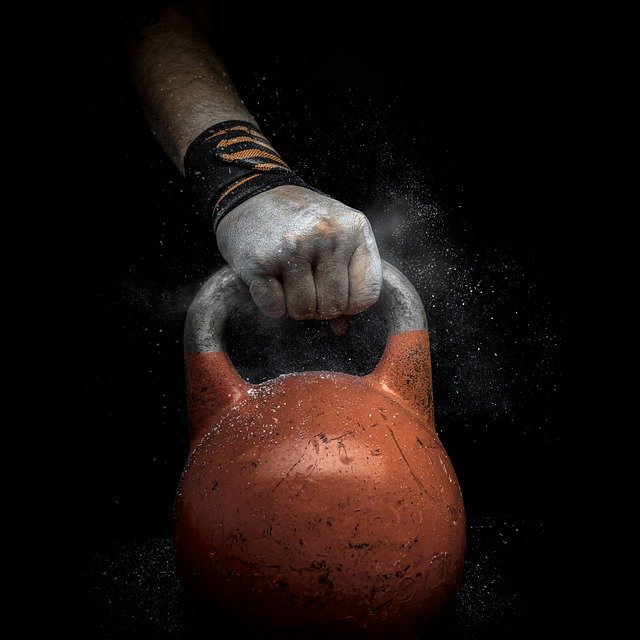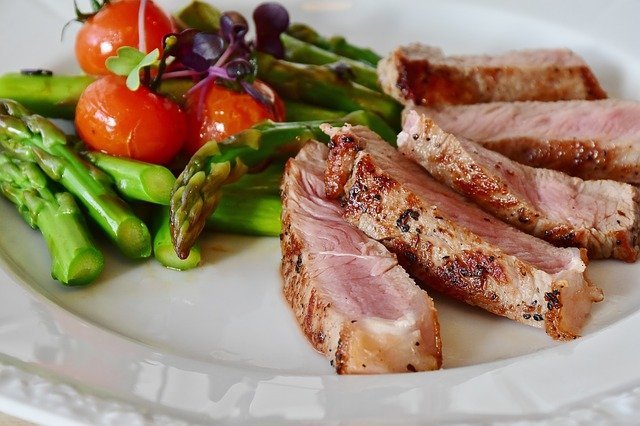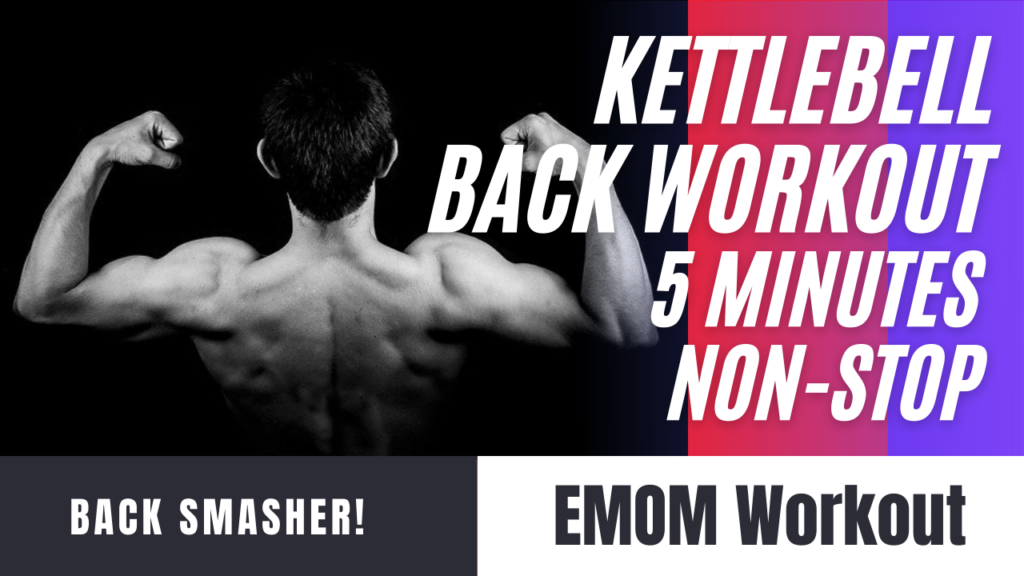
The Ultimate Guide: Are Kettlebells Good For Hypertrophy? (Tips & Hints To Achieve Success)
Are kettlebells effective for hypertrophy? This question has been a topic of debate among fitness enthusiasts for years. Originating in Russia over a century ago, kettlebells have become a popular tool in the fitness world. But can they really help in achieving muscle growth or hypertrophy?
In this article, we delve deeper into this topic and provide a comprehensive guide on how kettlebells can contribute to hypertrophy. We will explore the science behind hypertrophy, the role of kettlebells in muscle building, and effective kettlebell exercises for hypertrophy.
Our goal is to provide you with the knowledge and tools to effectively use kettlebells for muscle growth. So, let’s get started!
Are Kettlebells Good For Hypertrophy?
Kettlebells can be used for hypertrophy, although they aren’t seen as a traditional method to do so. If you are lifting heavy weight, whether it be in the form of barbells or kettlebells, the outcome is the same. As you will know, it’s not just down to the lifting of weight which creates the process, but other factors too, such as plenty of rest and good nutrition. Kettlebell grinds will increase hypertrophy as these exercises involve lifting the weight as opposed to ballistic exercises that involve swings. Increasing the weight lifted and changing up the workouts every few weeks, will set you on course to hypertrophy heaven. Remember to keep a log of your progress and set goals to work towards. It will take hard work and dedication to get there, but you already knew that right?
Understanding Hypertrophy
Before we dive into the role of kettlebells in hypertrophy, let’s first understand what hypertrophy is. Hypertrophy refers to the increase in size of skeletal muscle through a growth in size of its component cells. Two factors contribute to hypertrophy: sarcoplasmic hypertrophy, which focuses more on increased muscle glycogen storage, and myofibrillar hypertrophy, which focuses more on increased myofibril size.
It is a crucial aspect of bodybuilding-related activities and is achieved through a combination of weight training, adequate nutrition, and rest. The process of muscle growth involves the breakdown and repair of muscle fibers, which leads to an increase in muscle size.
This process is influenced by various factors, including the type of exercise, the intensity of the workout, and the individual’s diet and recovery.
In the context of kettlebell training, understanding the process of hypertrophy is crucial. It allows us to design effective kettlebell workouts that maximize muscle tension and time under tension, key factors for inducing muscle growth.

Kettlebells and Muscle Building
Kettlebells, though not traditionally associated with hypertrophy, can indeed contribute to muscle building. The key lies in understanding the concept of tension and time under tension with kettlebells. When you lift a kettlebell, your muscles are put under tension. The longer the muscles remain under this tension, the more they are stimulated to grow. This is where kettlebell grinds come into play.
Kettlebell grinds such as presses, squats, and deadlifts involve slow and controlled movements that maintain muscle tension for longer periods. This increased time under tension recruits more muscles and leads to better results for hypertrophy.
Working with kettlebells is very similar to using dumbbells and barbells, it just takes a little change of perspective to realise this. As you can perform the same or similar exercises with a heavy kettlebell in each hand, or offset the weight using one.
Kettlebell Exercises for Hypertrophy
There are several kettlebell exercises that are particularly beneficial for hypertrophy. Here are a few:
- Kettlebell Swing: This exercise targets the hamstrings, glutes, and lower back, promoting muscle growth in these areas. To perform a kettlebell swing, stand with feet hip-width apart, hold the kettlebell with both hands, and swing it between your legs and up to chest height.
- Kettlebell Deadlift: This compound movement works multiple muscle groups at once, leading to increased muscle mass. Start with the kettlebell between your feet, bend at the hips and knees to grab it, then stand up straight, keeping your back flat.
- Kettlebell Goblet Squat: This exercise is great for building lower body strength and muscle mass. Hold the kettlebell by the handles at chest level, then lower into a squat, keeping your chest up and knees over your toes.
- Kettlebell Hang Clean: This exercise targets the shoulders, back, and legs, promoting overall muscle growth. Start with the kettlebell in one hand, swing it back between your legs, then quickly reverse the direction and pull it up to your shoulder.
- Kettlebell Push Press: This compound exercise works the shoulders, triceps, and core, leading to increased upper body muscle mass. Start with the kettlebell at shoulder level, bend your knees slightly, then push up to a standing position while pressing the kettlebell overhead.
- Kettlebell Clean and Press: This full-body exercise promotes overall muscle growth and strength. Start with the kettlebell on the floor, clean it up to your shoulder, then press it overhead.
Remember, the key to hypertrophy is not just performing these exercises, but doing them with the right intensity and volume.
Aim for 3-4 sets of 8-12 reps for each exercise, and remember to progressively increase the weight as your strength improves.
Related: Why Does The Kettlebell Rack Position Hurt?
The Role of Eccentric Phase in Kettlebell Training
In kettlebell training, the eccentric phase of an exercise plays a crucial role in muscle growth. The eccentric phase refers to the part of the movement where the muscle lengthens under tension. For example, in a kettlebell squat, the downward phase is the eccentric phase.
Training the eccentric phase allows for greater muscle tension and more time under tension, both of which are key factors for hypertrophy. Therefore, focusing on the eccentric phase in your kettlebell exercises can significantly enhance muscle growth.
This is because during the eccentric phase, muscle fibers are damaged, leading to a repair process that results in muscle growth.
Kettlebell Training Programs for Hypertrophy
To effectively use kettlebells for hypertrophy, it’s beneficial to follow a structured training program. One such program is the kettlebell split workout 12-week program. This program involves a variety of kettlebell exercises designed to target different muscle groups and promote overall muscle growth.
Another approach is to focus on building functional mass with kettlebells. This involves performing exercises that mimic everyday movements, thereby working multiple muscle groups and promoting functional strength along with muscle growth.
For example, a kettlebell clean and press works the legs, core, and shoulders, mimicking the movement of lifting something from the ground and placing it overhead. This not only builds muscle mass but also improves functional strength, making everyday tasks easier.
Remember, the key to hypertrophy is not just the exercises you do, but also the intensity, volume, and progression of your workouts. Always aim to gradually increase the weight of the kettlebells you use, the number of reps you do, or the number of sets you perform.
FAQs
Here are some frequently asked questions about kettlebells and hypertrophy:
Are kettlebells good for muscle building?
Yes, kettlebells can be an effective tool for muscle building when used correctly. They can provide the necessary tension and time under tension for muscle growth.
Can you bulk with kettlebells?
Yes, with the right training program and nutrition, you can bulk up using kettlebells. It’s all about the intensity, volume, and progression of your workouts.
How many kettlebell swings for hypertrophy?
The number of swings will depend on your fitness level and the weight of the kettlebell. However, a common recommendation is to start with 3 sets of 10-15 swings and gradually increase as your strength improves.
What kind of physique will kettlebells give you?
Kettlebell training can help you build a lean, muscular physique with functional strength. It’s not just about size, but also about strength, power, and mobility.
Related: Kettlebell Press And Elbow Pain?
Final Thoughts…
Kettlebells can indeed be an effective tool for hypertrophy. By understanding the concept of tension and time under tension, focusing on the eccentric phase of exercises, and following a structured training program, you can use kettlebells to achieve significant muscle growth.
So why not incorporate kettlebells into your workout routine and experience the benefits for yourself? Remember, the key to hypertrophy is not just the exercises you do, but also the intensity, volume, and progression of your workouts.
So, grab a kettlebell and start your journey to muscle growth today!
Workouts This Way…
If you enjoyed this, then please check out the YouTube channel, with over 60 workouts which include the use of kettlebells, resistance bands, dumbbells and even body weight exercises too.
Don’t forget, I will be adding more workouts weekly to help you stay fit and healthy at home with just the use of a kettlebell.
With workouts of all types, for all fitness levels. You know that we have you covered, so stay tuned for more.
Keep practising this workout and increase those reps until the next workout drops in a weeks time. You won’t regret it!
If you enjoy sport and use CBD to help with your recovery in between gruelling workouts, then your are in the right place. Here at Sport CBDs, we train hard and recover the best way possible…
We have regular workouts (check out the YouTube channel), CBD news and CBD products to help you gain that edge!
If you wanted to check out the reputable CBD we have on offer here at the site, then please head to the Sport CBDs Store. We also do fitness clothing and yoga accessories too.
Until next time, all the best…


